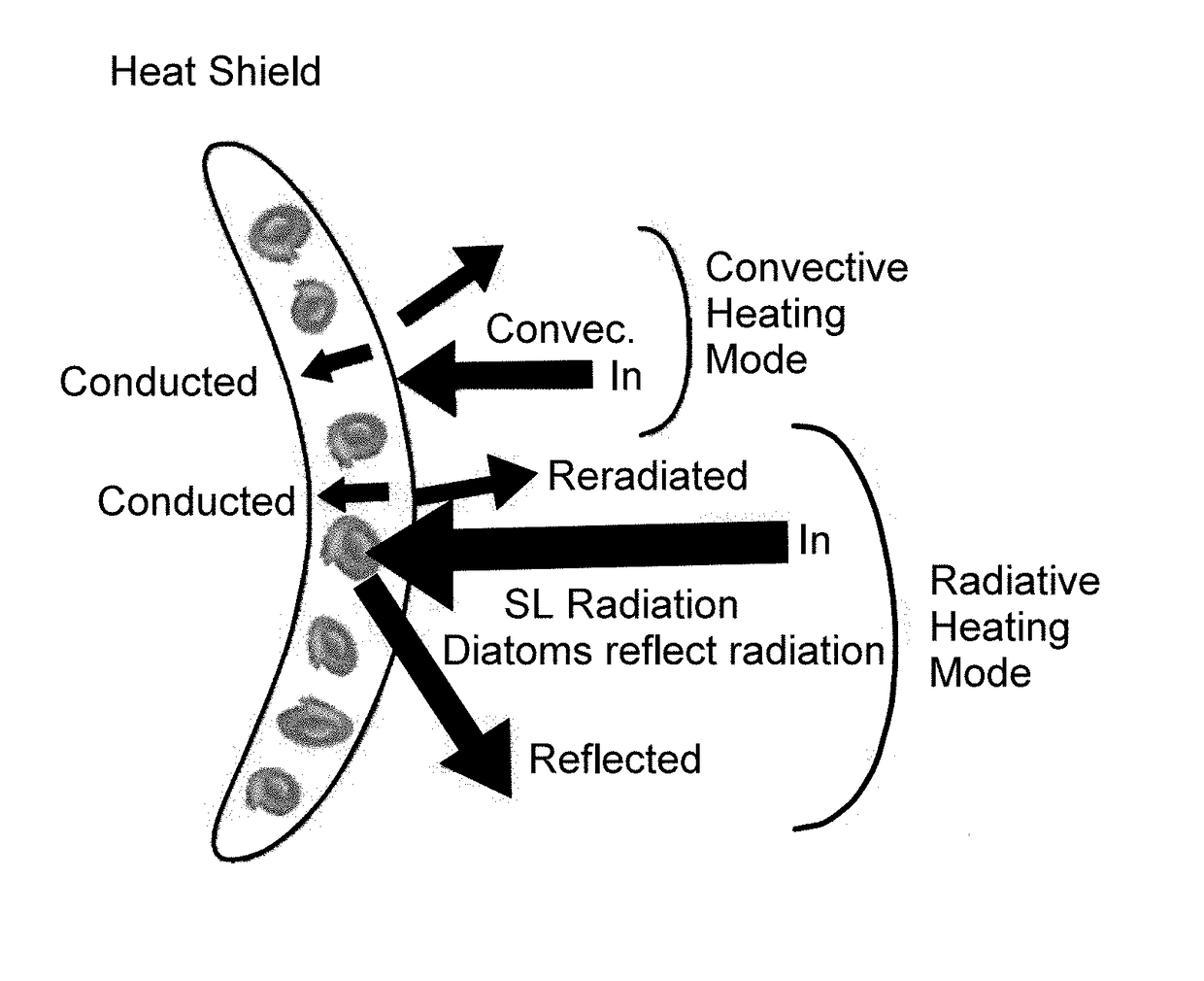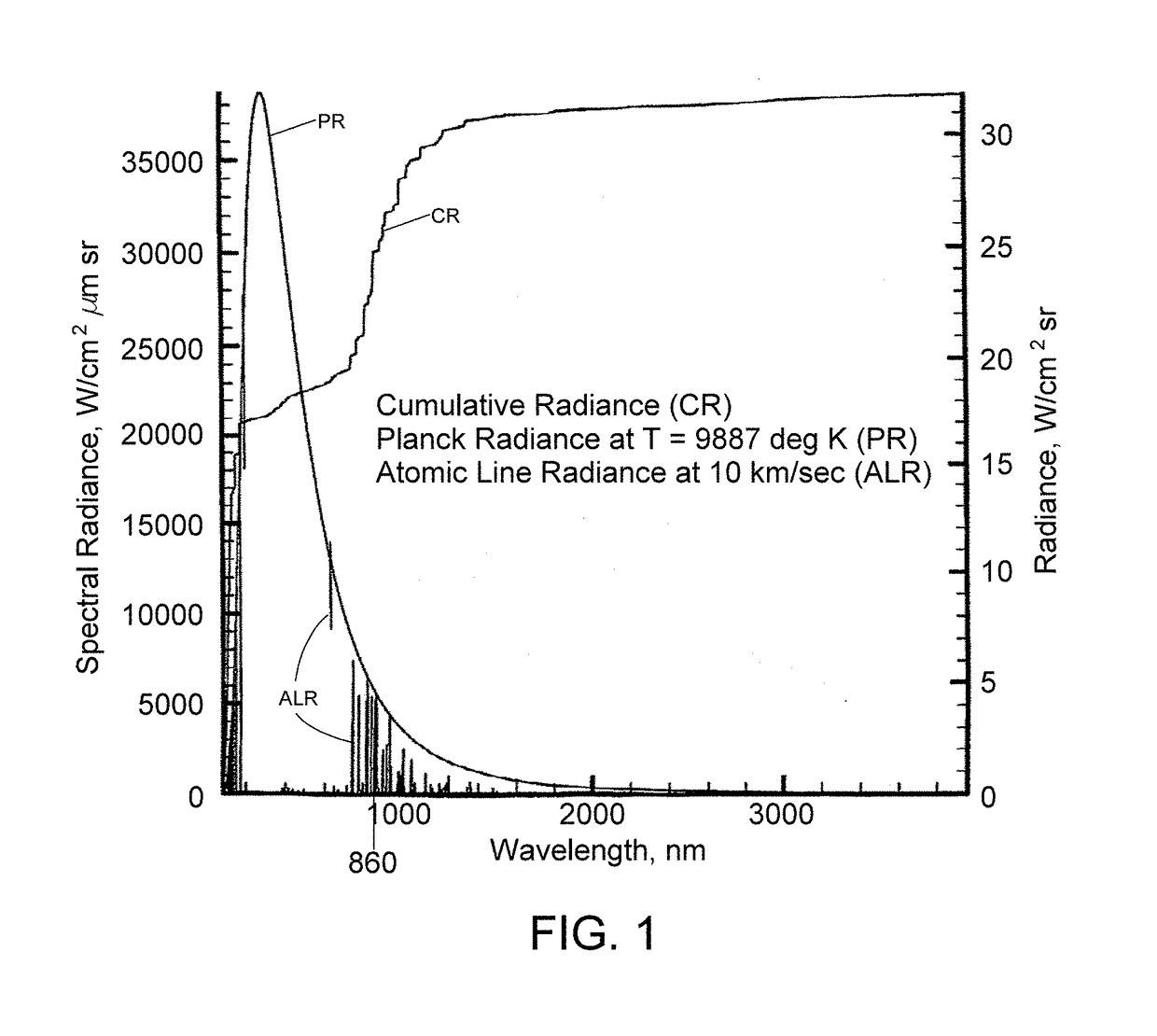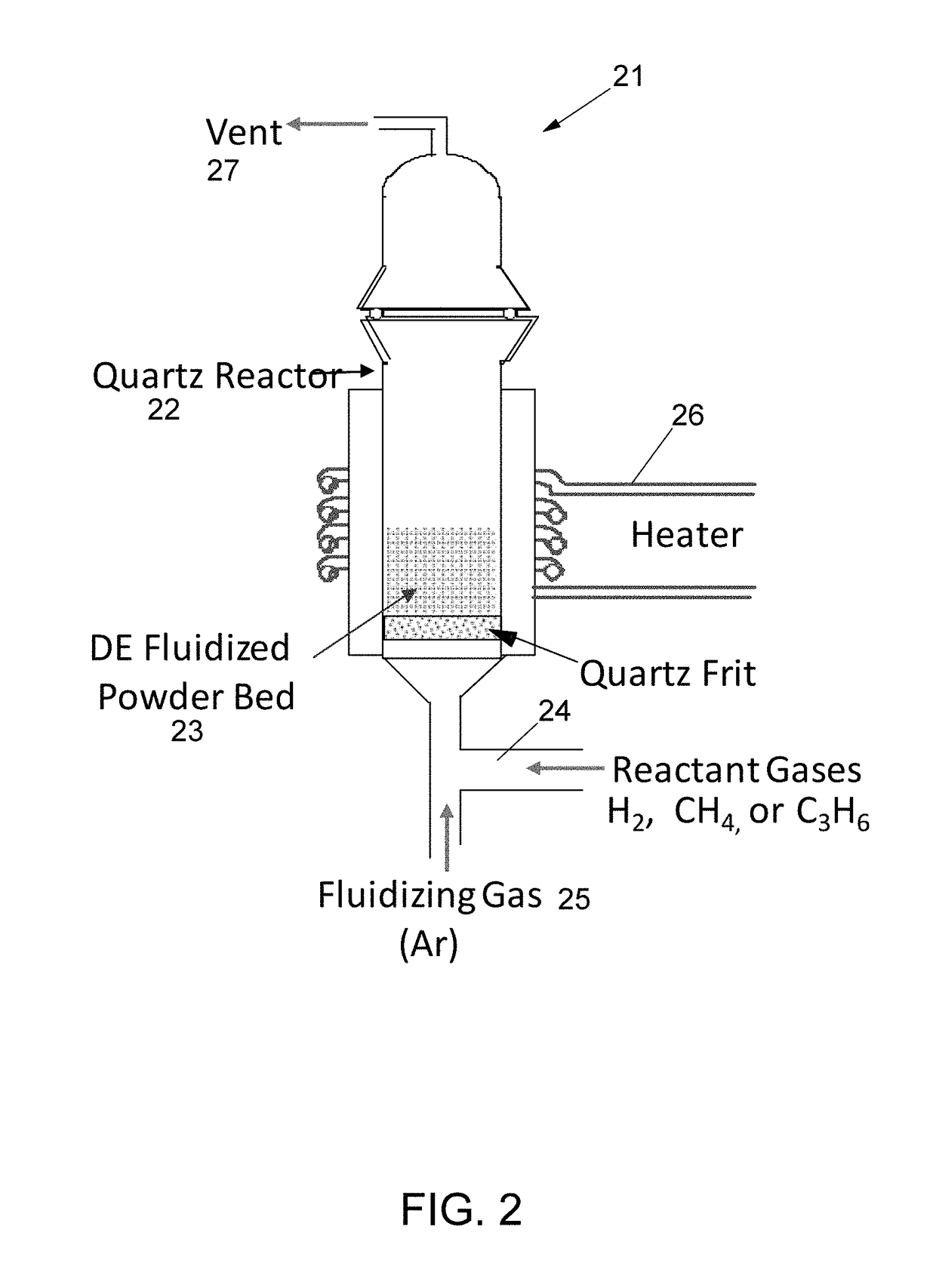Biologically inspired radiation reflector
a radiation reflector and biological technology, applied in the field of biological inspiration radiation reflectors, can solve the problems of high cost and technical demands of construction of such a heat shield, and achieve the effects of increasing the incidence angle of radiation, high phase change temperature, and optical
- Summary
- Abstract
- Description
- Claims
- Application Information
AI Technical Summary
Benefits of technology
Problems solved by technology
Method used
Image
Examples
Embodiment Construction
.
[0016]The invention relies for the initial (natural) material upon diatoms containing diatomite (diatomaceous earth), a sedimentary rock composed of fossilized skeletons of diatoms, which are one-celled, algae-like, micron-sized, mostly photosynthetic phytoplankton. Diatomite composition is mainly amorphous SiOx, with a quasi-periodic arrangement of inter-connected pores of nanometer size. These quasi-periodic structures give diatomite some useful photon interaction characteristics.
[0017]Each diatom is bounded by a silica frustule or cell wall, including two valves of slightly different size that fit together in a connective zone, known as a girdle, and enclose the remainder of a diatom. An estimated 100,000 species of diatoms are extant in the oceans, usually restricted to the photic zone. Diatom diameters normally range from 40 nm to 200 μm, with pore-to-pore separations that are consistent with a preferred wavelength range {λrad}.
[0018]The diatoms initially comprise SiOx. A goal...
PUM
| Property | Measurement | Unit |
|---|---|---|
| Temperature | aaaaa | aaaaa |
| Temperature | aaaaa | aaaaa |
| Thickness | aaaaa | aaaaa |
Abstract
Description
Claims
Application Information
 Login to View More
Login to View More - R&D
- Intellectual Property
- Life Sciences
- Materials
- Tech Scout
- Unparalleled Data Quality
- Higher Quality Content
- 60% Fewer Hallucinations
Browse by: Latest US Patents, China's latest patents, Technical Efficacy Thesaurus, Application Domain, Technology Topic, Popular Technical Reports.
© 2025 PatSnap. All rights reserved.Legal|Privacy policy|Modern Slavery Act Transparency Statement|Sitemap|About US| Contact US: help@patsnap.com



